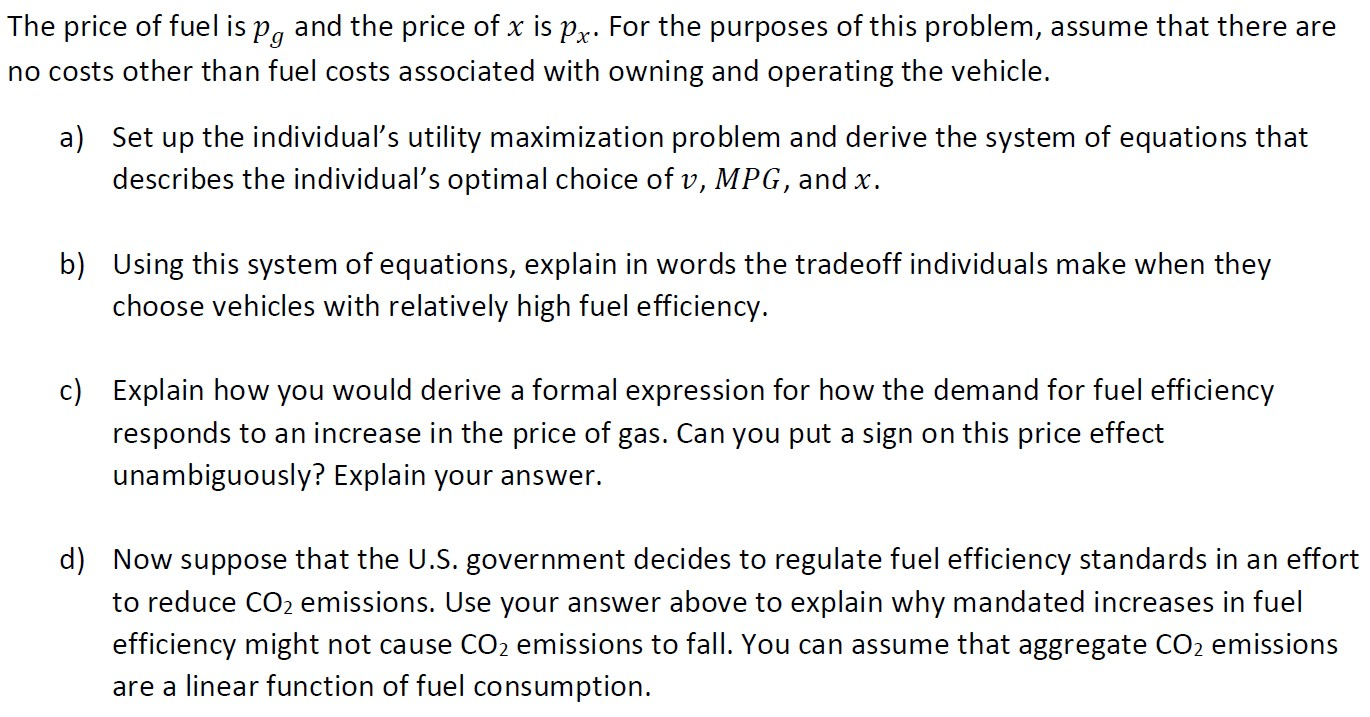
The price of fuel is pg and the price of x is Px. For the purposes of this problem, assume that there are no costs other than fuel costs associated with owning and operating the vehicle. a) Set up the individual's utility maximization problem and derive the system of equations that describes the individual's optimal choice of v, MPG, and x. b) Using this system of equations, explain in words the tradeoff individuals make when they choose vehicles with relatively high fuel efficiency. c) Explain how you would derive a formal expression for how the demand for fuel efficiency responds to an increase in the price of gas. Can you put a sign on this price effect unambiguously? Explain your answer. d) Now suppose that the U.S. government decides to regulate fuel efficiency standards in an effort to reduce CO2 emissions. Use your answer above to explain why mandated increases in fuel efficiency might not cause CO2 emissions to fall. You can assume that aggregate CO2 emissions are a linear function of fuel consumption. The price of fuel is pg and the price of x is Px. For the purposes of this problem, assume that there are no costs other than fuel costs associated with owning and operating the vehicle. a) Set up the individual's utility maximization problem and derive the system of equations that describes the individual's optimal choice of v, MPG, and x. b) Using this system of equations, explain in words the tradeoff individuals make when they choose vehicles with relatively high fuel efficiency. c) Explain how you would derive a formal expression for how the demand for fuel efficiency responds to an increase in the price of gas. Can you put a sign on this price effect unambiguously? Explain your answer. d) Now suppose that the U.S. government decides to regulate fuel efficiency standards in an effort to reduce CO2 emissions. Use your answer above to explain why mandated increases in fuel efficiency might not cause CO2 emissions to fall. You can assume that aggregate CO2 emissions are a linear function of fuel consumption







